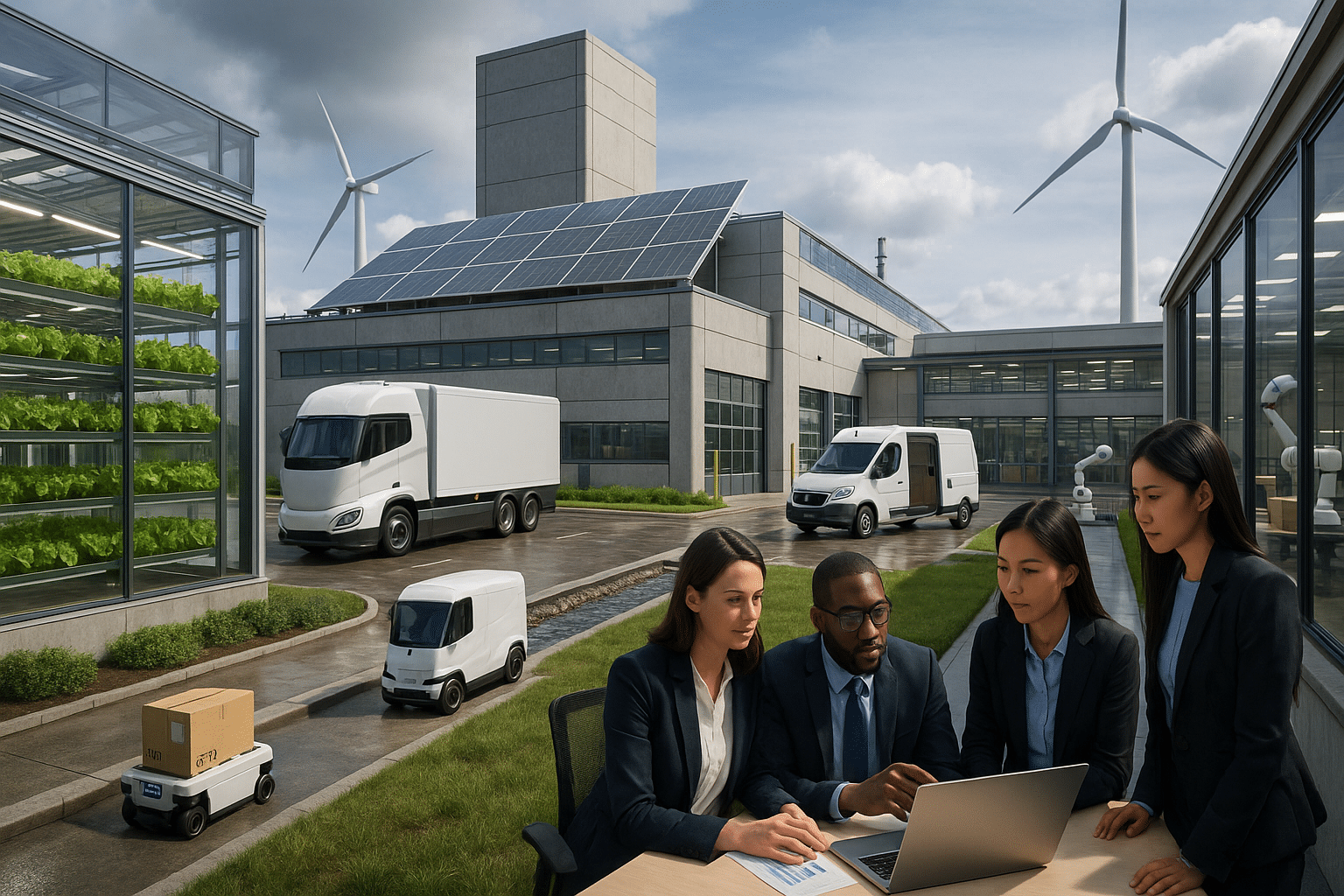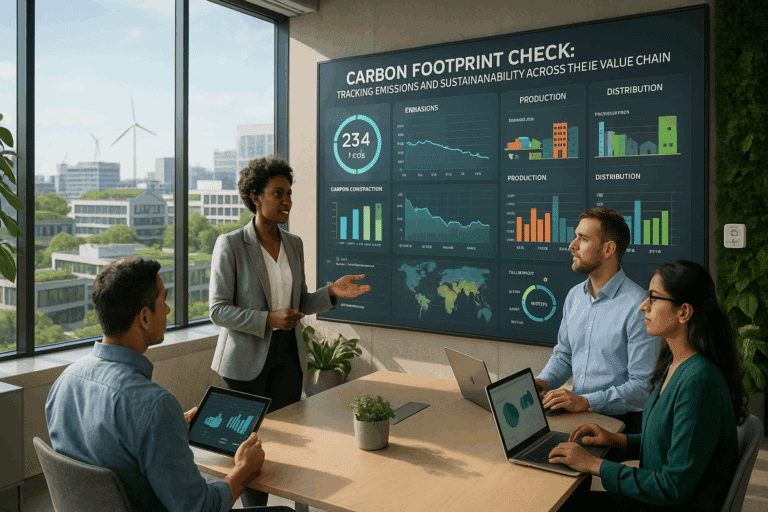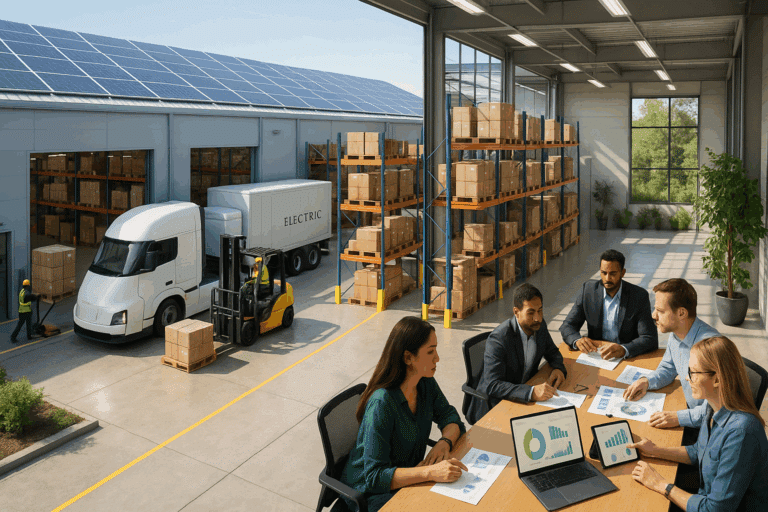No entanto, quando essas incertezas se transformam em desastres inesperados, as empresas enfrentam perturbações significativas em suas cadeias de suprimentos. A questão torna-se então: como construir uma cadeia de suprimentos sustentável que seja capaz de resistir às tempestades, literais e figurativas? 🔧🌿
Nesta era de consciência ambiental, globalização e conectividade sem precedentes, o modelo tradicional de cadeias de suprimentos já não é suficiente. O futuro demanda cadeias de suprimentos resilientes e sustentáveis, capazes de absorver os choques e as tensões de um mundo em constante mudança.
A “Resiliência” e a “Sustentabilidade” são palavras-chave aqui. Resiliência se refere à capacidade de uma cadeia de suprimentos de resistir a perturbações e se recuperar rapidamente. Por outro lado, a sustentabilidade garante que a cadeia de suprimentos esteja alinhada com os objetivos ambientais, sociais e de governança (ESG) para uma performance de longo prazo. Portanto, a combinação dessas duas capacidades pode criar uma cadeia de suprimentos à prova de desastres, que não só sobrevive, mas prospera em meio a adversidades. 🌐🔄
Este artigo tem como objetivo aprofundar a compreensão dessas duas facetas vitais das cadeias de suprimentos modernas e explorar como as empresas podem construir uma cadeia de suprimentos resiliente e sustentável para um futuro mais forte. Ao longo do caminho, nós iremos mergulhar em exemplos práticos, discutir estratégias eficazes, e revelar insights de especialistas na área.
A importância da Resiliência
Na primeira parte deste artigo, iremos explorar a importância da resiliência nas cadeias de suprimentos. Discutiremos como a resiliência pode ser a chave para evitar interrupções catastróficas e garantir a continuidade dos negócios. Nós também vamos detalhar as principais estratégias para construir resiliência, incluindo a diversificação de fornecedores, a digitalização da cadeia de suprimentos, e o investimento em tecnologias de ponta. 🏭⚡
A necessidade de Sustentabilidade
Em seguida, iremos nos aprofundar na sustentabilidade nas cadeias de suprimentos. Examinaremos por que a sustentabilidade é mais do que apenas uma questão ambiental, mas também um imperativo estratégico que pode trazer benefícios a longo prazo. Nós analisaremos estratégias sustentáveis, desde a adoção de energia verde até a promoção de práticas de trabalho justas e seguras. 🌳🤝
Construindo Cadeias de Suprimentos Resilientes e Sustentáveis
Por fim, iremos sintetizar essas ideias e fornecer um guia passo a passo para construir cadeias de suprimentos resilientes e sustentáveis. Combinando os conceitos de resiliência e sustentabilidade, as empresas podem criar um modelo de cadeia de suprimentos que é capaz de resistir a desafios, minimizar impactos negativos, e trazer valor duradouro. 🔨💡
Este é um momento crucial para as cadeias de suprimentos. A turbulência recente reforçou a necessidade de adaptabilidade e resistência. E, ao mesmo tempo, as crescentes demandas por responsabilidade ambiental e social estão redefinindo o que significa ser uma empresa sustentável. Juntos, esses fatores estão redefinindo o futuro das cadeias de suprimentos. Vamos embarcar nesta jornada juntos, em busca de cadeias de suprimentos resilientes e sustentáveis para um futuro mais forte.
Understanding the Concept of Resilient Roots
In an era where the future of businesses largely depends on sustainable practices, it’s critical to understand the concept of ‘Resilient Roots.’ It’s an approach that focuses on building disaster-proof sustainable supply chains, which is the bedrock of any successful business in today’s dynamic environment. Not only does it bolster the business resilience but also reduces risks associated with supply chain disruptions.
Over the years, catastrophic events such as natural disasters, global pandemics, and economic downturns have amplified the importance of developing resilient supply chains. To put it simply, the more resilient your supply chain, the better prepared your business is to weather the storm. In the following sections, we will delve into the intricacies of building such a supply chain and the benefits it offers for a stronger future.
Before we delve into the details, it’s important to watch this comprehensive video titled “Resilient Supply Chain: The Key to Business Continuity” from the YouTube channel, ‘Supply Chain Insights.’ It provides a clear understanding of what it means to have a resilient supply chain and how it can make a business disaster-proof.
Key Elements of a Disaster-Proof Sustainable Supply Chain
Creating a disaster-proof sustainable supply chain might sound like a mammoth task. However, it can be achieved by focusing on a few key elements. These are – risk management, agility, adaptability, and alignment. Each of these elements has a unique role in enhancing the resilience of your supply chain.
Effective risk management involves identifying potential risks in the supply chain and developing strategies to mitigate them. This could involve diversifying suppliers, creating contingency plans, and investing in supply chain technologies.
Agility refers to the ability of a supply chain to quickly respond to changes. This might involve ramping up production during peak periods or finding alternative suppliers when a primary one is unable to fulfill orders. Meanwhile, adaptability is about adjusting to long-term changes such as shifts in consumer behavior, market trends, or regulatory requirements. Lastly, alignment refers to ensuring that all parties in the supply chain – from suppliers to customers – are working towards the same goals.
To get a better understanding of these elements, let’s look at the table below:
| Element | Description |
|---|---|
| Risk Management | Identifying and mitigating potential risks in the supply chain. |
| Agility | Quickly responding to changes in supply and demand. |
| Adaptability | Adjusting to long-term shifts in the market or regulatory environment. |
| Alignment | Ensuring all parties in the supply chain are working towards the same goals. |
Building a Disaster-Proof Sustainable Supply Chain: A Step-by-Step Guide
Now that we understand the key elements of a resilient supply chain, let’s discuss how to build one. The following step-by-step guide outlines the key steps businesses need to take:
1. Identify Potential Risks: The first step is to identify all potential risks that could disrupt your supply chain. These could range from natural disasters to supplier bankruptcy. Using tools like risk heat maps can be helpful in this process.
2. Develop Risk Mitigation Strategies: Once you have identified potential risks, the next step is to develop strategies to mitigate them. This might involve diversifying suppliers, investing in supply chain technology, or creating contingency plans.
3. Improve Supply Chain Visibility: Enhancing supply chain visibility is a critical step in building a resilient supply chain. This involves tracking goods from production to delivery and sharing this information with all parties involved in the supply chain.
4. Invest in Supply Chain Technology: Supply chain technology can greatly enhance the resilience of your supply chain. This could involve investing in technologies like blockchain, AI, and IoT.
5. Train Your Team: Last but not least, it’s important to train your team on best practices for managing supply chain disruptions. This will ensure they are well-equipped to handle any challenges that arise.
For more insights on this topic, check out the video “Building Resilient Supply Chains” on the YouTube channel ‘IBM Think’.
The Future of Resilient Roots: Leveraging Technology
As we move towards a future defined by unpredictable events, the importance of resilient supply chains will only increase. Technology will play a crucial role in enabling this resilience. Technologies like AI, blockchain, and IoT will provide the tools necessary to track goods in real-time, predict potential disruptions, and quickly respond to changes.
AI, for instance, can be used to analyze large amounts of data to identify trends and predict future disruptions. Blockchain can be used to create a transparent and immutable record of all transactions in the supply chain, enhancing visibility and accountability. Meanwhile, IoT devices can be used to track goods in real-time, providing valuable insights that can be used to optimize the supply chain.
Embracing these technologies will not be easy. It will require significant investments in infrastructure and skills. However, the benefits they offer in terms of enhanced resilience and sustainability make them a worthwhile investment. As businesses around the world begin to recognize these benefits, the adoption of these technologies will only accelerate, paving the way for a future defined by resilient roots.

Conclusion
In conclusion, as we have traversed through this comprehensive narrative, we have decoded intricate concepts and the intricate facets of the field of IT and engineering. We have demystified complex terminologies, dissected multifaceted processes, and unveiled the significance of advancements in these fields.
The first section of the article plunged into the fundamental concepts, laying the groundwork for understanding the subsequent, more complex, topics. We learned about the foundational concepts and the importance of their understanding to anyone venturing into the world of IT and engineering.
As we moved ahead, we delved into the practical aspects of IT and engineering. This section demonstrated the application of the concepts learned previously, highlighting the interdependence of theory and practice in these areas.
We then tackled some of the most complex topics, helping the reader understand not just what these concepts are, but also why they matter and how they can be applied. This journey, while challenging, is ultimately rewarding, equipping the reader with knowledge that is both deep and broad.
Finally, we explored the future trends and implications, providing an exciting glimpse into what lies ahead in IT and engineering. This foresight not only sparks enthusiasm but also prepares us for the impending changes.
In essence, this article has striven to demystify complex concepts in IT and engineering and provide a comprehensive understanding that is both deep and broad. The importance of these fields cannot be overstated. As technology becomes increasingly embedded in our lives, understanding these concepts is no longer a luxury but a necessity.
As the author, my intent has been to make the path to this understanding less daunting and more engaging. I hope I have been successful in doing so and that you have found the journey enlightening.
Now, it’s your turn. Comment below on what you found most interesting or challenging. Share the article with your peers and spread the knowledge. If you’re working in these areas, apply what you have learned and observe the impact.
Feel free to refer back to the article as often as needed, as it’s a resource meant for your reference. And remember, learning is a lifelong process. Stay curious and never stop exploring.
Thank you for joining me on this journey of discovery. Let’s continue to unravel the mysteries of the tech world together.
Refer to TechCrunch and engineering.com for more insightful reads on these topics.
😊 Keep learning, keep growing! 🚀



